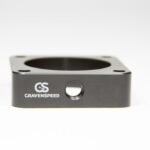Water meters, unassuming sentinels of our domestic plumbing, often escape our notice. Yet, these devices, responsible for quantifying our water consumption, warrant closer inspection. What exactly does a water meter look like? This question, surprisingly common, belies a deeper curiosity about the infrastructure that sustains modern life.
At its most fundamental, a water meter is an instrument designed to measure the volume of water that passes through a pipe. These devices are essential for billing accuracy and resource management.
I. External Appearance: Common Characteristics
Most residential water meters are housed within a protective encasement, often made of cast iron or a durable polymer. The visible portion typically consists of a circular dial or a digital display. This is the register, and it’s where the water usage is numerically represented. The register is covered by a protective lens.
Look closely and you’ll likely see markings denoting the units of measurement. Cubic feet or gallons are common in the United States. Other countries utilize metric units like cubic meters. A serial number is almost always present, crucial for identification and tracking. These numbers are essential for maintenance and ensuring the correct meter is associated with the correct property.
II. Variations in Design: Exploring the Spectrum
While the basic function remains constant, water meters exhibit considerable design variation. These variations are determined by factors such as the size of the water line, the expected flow rate, and the technology employed in the measurement process.
A. Displacement Meters: A Mechanical Marvel
These meters, often referred to as positive displacement meters, are the most common type in residential settings. Inside the meter, a precisely engineered chamber of known volume is filled and emptied as water flows through. The rotations are counted. This count provides an accurate measure of total water usage. The oscillating piston or nutating disc is the heart of this mechanism.
Visually, displacement meters are often compact and easily identifiable by their mechanical register, complete with spinning dials similar to an odometer. These dials directly reflect the amount of water consumed.
B. Velocity Meters: Capturing Fluid Dynamics
Velocity meters, on the other hand, measure the speed of the water flowing through the pipe. These meters are better suited for higher flow rates. A turbine or propeller, situated within the water stream, rotates at a speed proportional to the water’s velocity.
These meters tend to be larger than displacement meters and might be used in commercial settings. They can include turbine meters or propeller meters, each with a slightly different physical appearance. Electromagnetic meters also fall into this category.
C. Smart Meters: The Digital Frontier
Smart meters represent a technological advancement in water metering. These devices not only measure water consumption but also transmit data wirelessly to the utility provider. This allows for real-time monitoring and billing.
Smart meters often feature a digital display that shows current and historical water usage. Advanced models can even provide alerts for potential leaks or unusually high consumption. The inclusion of radio frequency (RF) transmitters and digital displays distinguishes them from their purely mechanical counterparts.
III. Installation Location: Where to Look
The location of a water meter varies depending on regional practices and property layout. In many regions, the water meter is located in an underground box, typically situated near the property line. The meter box usually has a lid made of metal or concrete.
In colder climates, water meters are often located inside the house to prevent freezing. The location is typically in the basement or utility room, near where the water line enters the building. Look for a pipe entering the house near the foundation.
IV. Dissecting the Fascination: Why We Look Closely
The common query about the appearance of a water meter is more than a simple request for identification. It reflects a growing awareness of resource management and an increasing desire to understand the systems that deliver essential services. The meter becomes a tangible point of connection to a vast network of infrastructure.
Furthermore, the meter’s function as a billing device adds another layer of intrigue. We examine it closely, hoping to decipher usage patterns and identify potential anomalies that might impact our water bill. A sudden spike in usage can signal a leak or other problem that requires immediate attention.
In conclusion, the water meter, while seemingly mundane, is a critical component of our water infrastructure. Its appearance, varying according to its design and technology, offers a glimpse into the complex processes involved in measuring and managing our water resources. The next time you encounter a water meter, take a moment to appreciate its understated role in delivering a resource essential to modern life. The quantification of our dependency is something to respect.










Leave a Comment